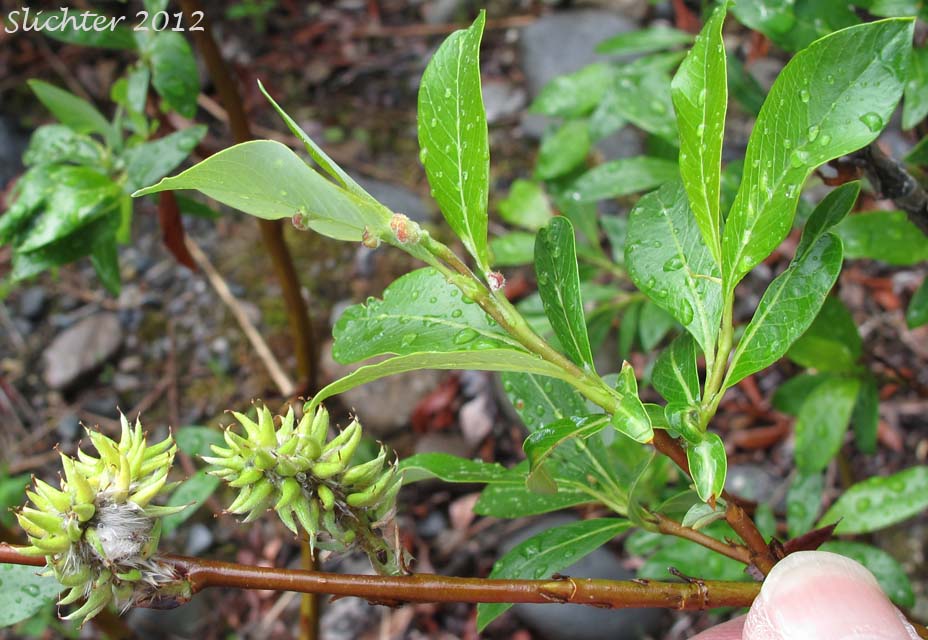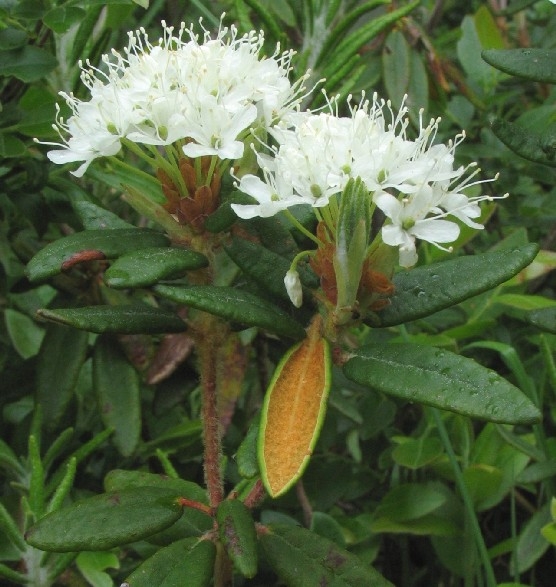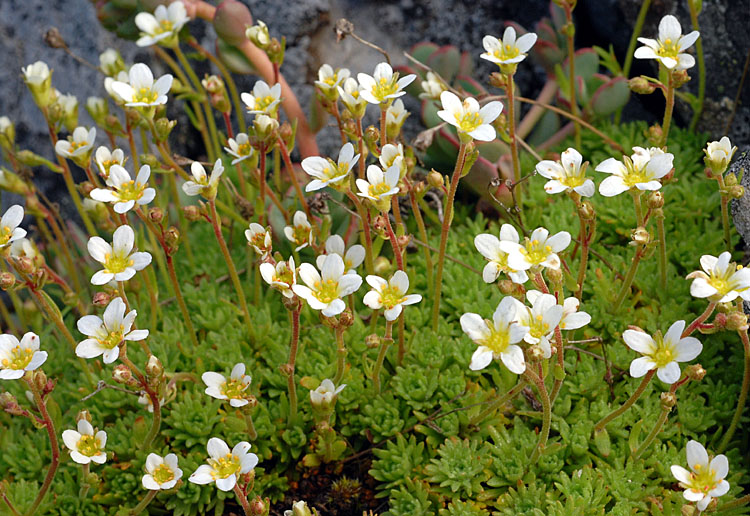Where is Tundra located ?
The tundra is located at the top of the world, near the North Pole. This enormous biome, extremely uniform in appearance, covers a fifth of the earth's surface. Tundra is the coldest of all the biomes. Tundra comes from the Finnish word tunturi, meaning treeless plain. It is noted for its frost-molded landscapes, extremely low temperatures, little precipitation, poor nutrients, and short growing seasons. Dead organic material functions as a nutrient pool. The two major nutrients are nitrogen and phosphorus. Nitrogen is created by biological fixation, and phosphorus is created by precipitation.

Climate in Tundra :-
The average winter temperature is -34° C (-30° F), but the average summer temperature is 3-12° C (37-54° F) which enables this biome to sustain life. Rainfall may vary in different regions of the arctic. Yearly precipitation, including melting snow, is 15 to 25 cm (6 to 10 inches).
Animals found in Tundra :-
Polar Bear
Polar Bears appear to have a white coat; however, the
actual hairs are translucent and clear. The skin of the Polar Bear is
black. The coat and skin are adapted to absorb sunlight and retain
heat. Like many animals of the tundra, Polar Bears have short ears to
minimize heat loss. Polar Bears' diets consist mainly of seals. Polar Bears will use a variety of tactics while hunting seals, and these tactics will usually
involve stealth and patience.Polar Bears will occasionally feed on
other animals including walruses.Polar Bears will also sometimes
feed on the carcases of dead whales.

Caribou
Caribou are migratory animals and are known for mass migrations
across the tundra in search of food. Caribou are well adapted to living
in the tundra with thick fur and skin that enable them to enter frigid
rivers while migrating. The hooves of caribou are wide to assist
supporting it on surfaces such as mud and snow, and wide hooves will
also help the caribou to dig and swim. The diet of the Caribou varies as the seasons change. In the summertime, when vegetation is more plentiful, Caribou will feed on a variety of plants including willow leaves. In the wintertime, Caribou will use their hooves to dig through snow to get to moss and other lichens that lie beneath the arctic surface.

Arctic Fox
Like many foxes, the Arctic Fox builds a den. For the Arctic Fox the
den can sometimes be in a hillside or river bank, and will usually have
multiple entrances and exits. The Arctic Fox can be found in arctic or
alpine tundra. Like many animals of the tundra, Arctic Foxes have special adaptations to help them survive in extremely cold climates. These adaptations include fur on its paws to help keep them warm, a thick, dense coat of fur around its body, short ears, a small body, and a large and bushy tail that it uses to curl around its body. Arctic Foxes' diets consist of small mammals including voles and lemmings, as well as on birds and their eggs. Arctic Foxes are opportunistic and will sometimes scavenge on dead carcasses of
animals, and they are often seen following Polar Bears to feed on the
leftovers the bears leave behind. Arctic Foxes will also eat some
vegetation such as berries.

Arctic Hare
Arctic Hares can be found in various tundra areas of Greenland and northern Canada.They will sometimes forage shelters in the snow to help them survive the extremely cold temperatures of the tundra. Arctic Hares have large hind feet that enable them to move very quickly across the snow. They also have claws that help them to dig through the snow when looking for mosses or other vegetation to eat.The Arctic Hare's diet consists of buds, berries, twigs, mosses, woody plants and other types of vegetation that can be found in the tundra.

Musk Ox
Musk Oxen have an outer coat made of long, brown hairs and an inner coat called qiviut which consists of wool.This is a special adaptation that helps the musk ox survive the freezing temperatures of the tundra. Musk Oxen are vegetarian and will eat much of the vegetation that is available in the tundra. This includes willow shoots, lichens, grasses and shrubs.

Snowy Owl
Snowy Owls will most often feed on small rodents including lemmings
and voles. Rabbits are another staple of the Snowy Owl's diet.The
owls are opportunistic and will also feed on other types of birds such
as ptarmigans as well as bird eggs of larger birds. Snowy Owls will build their nests on the ground, typically in a higher place than the surrounding land so that they will have good visibility to predators and prey. Snowy Owls have a
thick layer of feathers on their body as well as their feet to enable them
to survive in the tundra.

Plants In Tundra :-
Arctic Moss
The Calliergon giganteum is an aquatic plant found growing on the bottom of tundra lake beds and in and around bogs and fens. It is a member of the Siberian tundra biome. Like all mosses, Calliergon giganteum is a bryophyte. They have rhizoids (tiny rootlets) instead of roots. They never have wood stems. They have tiny leaves, usually only one cell thick. There are lots of leaves on the stem. They do not have flowers.

Arctic Willow
Arctic Willow is 15-20 cm in height. It has many different shapes, but sometimes has long trailing branches that root where they touch the surface. Rock willows/Arctic willows grow prostrate, shrub, and carpet. The leaves are oval shaped with pointed tips, wedge shaped bottoms, and have little stalks.The leaves are dark green on the bottom and a lighter green on the top.They have net like veins and long hairs that cover their leaves. The flowers of the Salix arctica are upright scaly spikes that are unisexual flowers with no petals.

Bearberry
Bearberry is a very useful plant. All parts of it can be used in some way. The fruit can be eaten and cooked with other foods. The roots can be made into a tea that can treat a constant cough or slow down menstrual bleeding. A tea from the stem is used to prevent miscarriage and to speed up a women's recovery after childbirth. The leaves can be added to tobacco or used as a substitute for it. A tea made from the leaves can be drunk to treat kidney or bladder problems. It's fine silky hairs also help to keep it warm.Leathery leaves are also an adaptation to the cold of the tundra
_-_geograph.org.uk_-_260788.jpg)
Caribou Moss
It grows on the ground and on rocks. It looks like a foamy, gray-green spongy mass, and grows to be 1 to 4 inches high. The stems, or stocks, are hollow, and branch out many times.

Diamond Leaf Willow
The twigs on a willow are soft, slender, and they bend easily. A willow has thin branches. The leaves are narrow and grow alternately on the branch. Some leaves have serrated edges.Willows have clusters of flowers that look like white, fuzzy caterpillars and are about 1 inch in length.When the willow blooms on the tundra it looks like a bumpy, fuzzy carpet covering the ground.The diamond leaf willow provides much needed food for grazing animal of the tundra, like musk oxen, and caribou or reindeer.

Labrador Tea
It has woolly branches with narrow 1 to 2 inch leaves which are smooth on the upper side, with rusty hairs underneath.They droop slightly and edges are rolled under, and are a leathery green in color. At the ends of the branches are tiny clusters of white flowers.The tea is very rich in vitamin C.Bees are attracted to the flowers, but animals don't eat them because they are said to be slightly poisonous.

Pasque Flower
The Pasque flower has several stems that rise 6-8 inches off the ground. On each stem is one flower with 5-8 petals. The range of color in the petals is from dark lavender to almost white. In the center of the flower are yellow stamens. Below the flower, around the stem is a leaf covered in silky hairs, as is the rest of the plant. The fruit of the plant is a plum that is achenial, which means that one seed is attached to the ovary wall, like a strawberry seed.

Tufted Saxifrage
Tufted Saxifrage is a small perennial that grow in thick mats on the tundra. It has several straight flower stems which can get 3-15 cm high. The leaves are rigid and very hairy and only 5-10 mm long. Their tips divide into 3 lobes.The Saxifrage has a well-developed underground root system forstoring carbohydrates, so that they can respond quickly to the cold weather of the tundra. Saxifraga heuchera is one of the few saxifrages used as an ornamental plant.

Tufted Saxifrage is a small perennial that grow in thick mats on the tundra. It has several straight flower stems which can get 3-15 cm high. The leaves are rigid and very hairy and only 5-10 mm long. Their tips divide into 3 lobes.The Saxifrage has a well-developed underground root system forstoring carbohydrates, so that they can respond quickly to the cold weather of the tundra. Saxifraga heuchera is one of the few saxifrages used as an ornamental plant.

Soil :-
Tundra has unique soil structure, permafrost, forms and dominates the biology. Permafrost is a layer of soil that remains frozen year-round.The soil above it may thaw during the summer, but the soil below remains frozen and thus biologically inactive. Further, the permafrost forms a barrier; in temperate climes many animals overwinter by burrowing down into the soil to a point below where the soil freezes.This is not possible in the tundra soils, and thus animals must contend with freezing over the winter. Permafrost limits root penetration to deep soil layers, effectively insulating lower soil layers from biological activity. Materials in permafrost layers are trapped and remain stored, mostly inert, for eons. Water becomes limiting, because soils don't have much depth in which to store water, and there is only a short period during the growing season when it thaws and becomes available. Thus, water shortages can be a problem in some tundra areas. In other areas, tundra is low elevation, and water collects and makes the ground boggy during the summer months.
Limited Factors :-
Temperature
The temperature in a tundra biome ranges between −94°F in winter to 54°F in summer. In contrast, mammals can survive in this harsh climate, owing to their ability to regulate their body temperature.
Sunlight
As a tundra biome is located at the poles, it is in darkness for a considerable part of the year. Lack of sunlight for a part of the year also means that plants grow in a tundra biome only during summer.
Poor Soil
Tundra plants also bear the brunt of poor soil. The soil in this biome is not just nutrient deficient, but also very shallow. As a result, trees cannot delve their root deep into it.
Limited Growing Season
As the region is subjected to darkness for nearly half the year, the process of photosynthesis is hindered, which, in turn, limits the growth of plants. The end result in a short growing season.This seasonal availability of food reflects on the abundance of animals in this ecosystem.
Food Supply
The shortage of food supply resulting from lack of sunlight for a part of the year, short growing season, and poor soil limits the population of herbivores and omnivores by forcing them to migrate in search of food and affecting their rate of reproduction.
Competition
hen the number of caribous in the Arctic tundra comes down, carnivorous species like gray wolves and wolverines start competing. Eventually, the food shortage resulting from this competition either results in their death, affects their rate of reproduction, or prompts them to migrate, thus restoring the balance in a tundra ecosystem.
Predation
When the caribou population increases, gray wolves have abundance of food at their disposal. This, in turn, boosts their reproduction rate and results in an increase in their population. In this manner, the population of both species is balanced out.
Human Impact :-
Human impact on the tundra has generally not been a positive one. Because the tundra is such a delicate environment, even the slightest change in conditions can threaten the entire biome. Recent human activities have largely undermined the habitat of the indigenous wildlife through hunting, global warming, oil drilling, overdevelopment, and pollution.

BIBLIOGRAPHY
http://www.appstate.edu/~neufeldhs/ecosystems/biomestundra.htm
http://www.tundraanimals.net/tundraanimals/rockptarmigan.html
http://www.blueplanetbiomes.org/tundra_plant_page.htm
http://www.mbgnet.net/sets/tundra/where.htm
http://www.ucmp.berkeley.edu/exhibits/biomes/tundra.php
http://www.buzzle.com/articles/limiting-factors-in-a-tundra-biome.html
http://www.ehow.com/facts_5903440_human-impact-tundra_.html
No comments:
Post a Comment